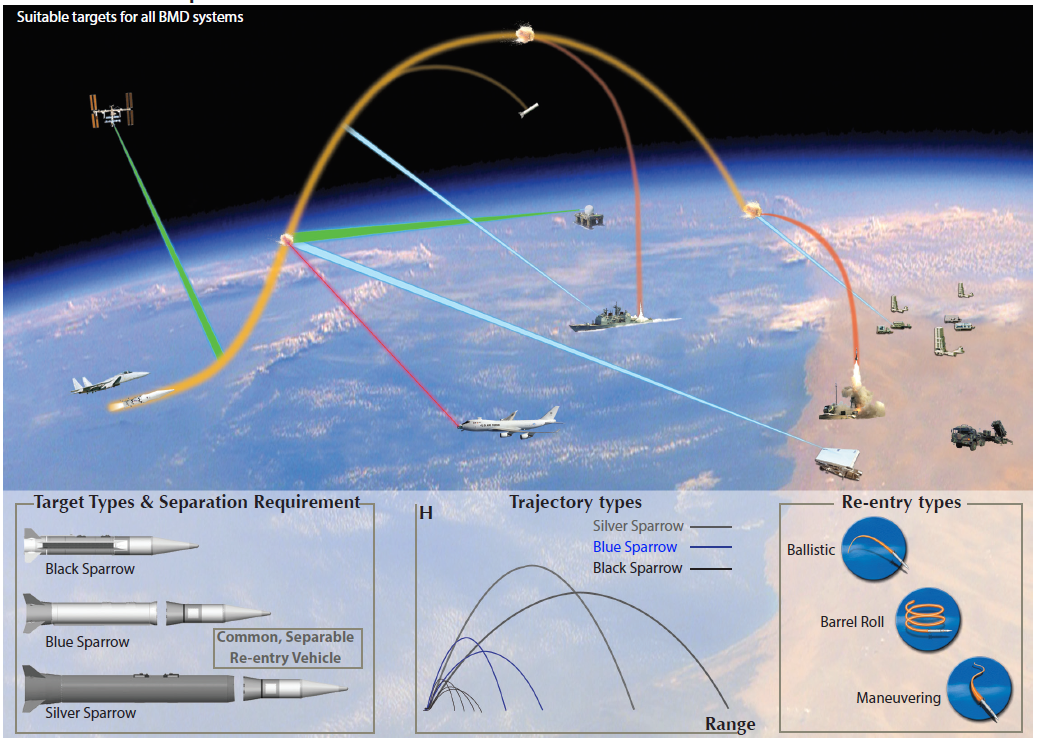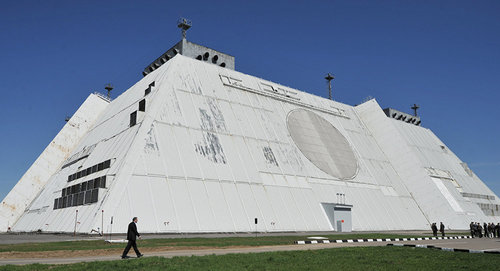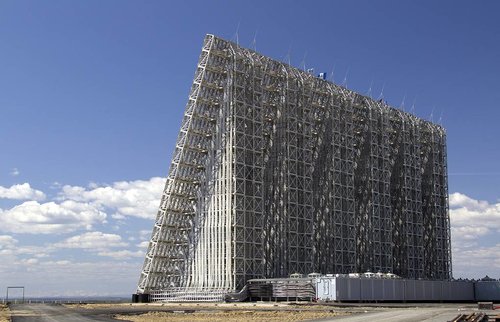panzerfeist1
ACCESS: Secret
How vulnerable are the US aircraft carriers and battle groups to enemy attack?
Answer has been deleted
Here you guys go. Enjoy the good read
No offense but that read is quite silly overall.
How vulnerable are the US aircraft carriers and battle groups to enemy attack?
Answer has been deletedqr.ae
Here you guys go. Enjoy the good read
No offense but that read is quite silly overall.
Why does the carrier park 300 km from the shore?. Since when Zircon has plasma stealth and why doesn't that affect its own seeker?. I read the explaination but that doesn't make a whole a lot of sense, if the sensor frequency is above 300 Ghz isn't that asking the atmosphere to fully absorbed it?. The explaination between Kallib and GQM-163 doesn't make sense too, I won't touch the dubious altitude explaination but the glaring issue is why doesn't the carrier use AEW&C?. That whole post look like a little advertising of Russian weapons such as why this and that is better than US counterpart, but there isn't much thought given on defense side
We discussed similar topic in SB but you couldn't convince member there so we eventually decided to stop.I believe we already went over this on another forum, don't tell me you have had a memory dump? Doesn't preprogrammed coordinates with INS against a slow moving target ring a bell? Or that plasma covered objects can still transmit RF waves as long as the radio frequency on those waves have a higher frequency than the covered plasma frequency that transmission can still occur? 300km is for the iskander range want to go above 1000km look at zircon or kinzhal in that explanation. AEWC can be targeted by enemy interceptors F-35s have a better chance with stealth and their radar coverage which was explained in that post as well. Kalibr missiles have longer low altitude ranges than short range coyotes how does this not make sense?
Why a carrier with attack range greater than 1000 km thanks to its aircraft would want to get closer than 1000 km to a destroyer or battleship with Zircon? or 300 km from the shore?.
Avangard's skin can withstand 3632 Fahrenheit
https://www.polygraph.info/a/fact-check-putin-avangard-hypersonic-weapon/29679968.html
3,632 degrees Fahrenheit = 2273.15 degrees Kelvin
At 2273 degrees Kelvin your plasma cover can only absorb frequency 5 MHz or lower which mean it is useless against most radar
On the otherhand, if the surface temperature of Avangard reach 15136.2435 kelvins like you claimed, it will be destroyed by friction and never reach destination because the material can only withstand 2273 degree Kelvin. Second of all, if the temperature reach 15000 Kelvin then your missile will be blind because the plasma sheath will now absorb all radiation from 1 Mhz to 350 Ghz.
Interesting choices we have:
- If the surface temperature is 2273 degrees Kelvin plasma stealth doesn't work.
or
-If the surface temperature is 15136 degrees Kelvin, Avangard is destroyed by heat because its skin can't withstand 15136.2435 kelvins and it is also blind.
About Zircon, at 4000 Kelvin, the plasma sheath only absorb frequency of 1 Ghz or lower, making it useless versus most fire control radars. Also, a missile can reach Mach 8 at 30 000 meters is no indicator that it can reach the same speed at 1000 meter flight ceiling. Because air at low altitude is a lot denser
They have always been vulnerable; but they are more vulnerable now than they ever have been.
They have always been vulnerable; but they are more vulnerable now than they ever have been.
Hardly. Japan lost four carriers in a single afternoon. Did the world start wringing it's collective panties and stop building carriers? Nope. Hmmmm.
The reason they replaced battleships is because the carrier's 'guns' (aircraft with bombs and torpedoes) vastly outranged the battleship's guns. They could attack while being immune to counterattack. They were still vulnerable to other carriers, land based aircraft, and subs. And surface ships if they got the jump on the carriers, but with a couple notable exceptions that wasn't likely given their recon ability.
They have always been vulnerable; but they are more vulnerable now than they ever have been.
Hardly. Japan lost four carriers in a single afternoon. Did the world start wringing it's collective panties and stop building carriers? Nope. Hmmmm.
You left out the next paragraph:
That's an unsupported assertion. I've made an argument, explain how you think it's irrelevant. And 'because it was irrelevant' isn't sufficient, it's a cop-out.They have always been vulnerable; but they are more vulnerable now than they ever have been.
Hardly. Japan lost four carriers in a single afternoon. Did the world start wringing it's collective panties and stop building carriers? Nope. Hmmmm.
You left out the next paragraph:
Because it was irrelevant.
_ Subsonic/supersonic missiles from aircraft can be used to attack airfield/destroyer/battle cruiser /OTHR.Well, we have:
- Throwing increasingly large numbers of subsonic (or even supersonic) missiles from aircraft
- 24x7,000kg submarine launched cruise missiles (Project 949)
- Ballistic missiles (maybe a half dozen 15,000kg missiles from a battery)
- Possibly a 2m diameter nuclear powered torpedo (mention as a secondary use for 'Poseidon'/'Status-6')
- 4x4,500kg 650mm torpedoes from an attack submarine (no longer in service)
- Space-based anti-carrier weapon systems (never finished).
- Hypersonic maneuvering warheads (still in development)
This shows a pretty strong desire to counter Carriers... one would think that, with this amount of effort and this variety of systems - something would get through. In addition, we live in an era of excellent optical and radar detection systems which make locating a carrier increasingly inevitable.
The same argument can be made about the anti carrier side . The carrier fleet always not prepare, they always do nothing to OTHR, airbase and satellites. Subsonic cruise missiles, supersonic missiles, ballistic missiles, hypersonic missiles are never used against OTHR and airbase or other kinds of surface ships."Everything will work properly on our side. Barely anything will work properly on enemy side. We will anyways be vigilant. Enemy will always be surprised".
What would be an equally cost effective replacement for a carrier? Right then. Your argument is irrelevant because carriers have ALWAYS been at risk (as have every other weapons system on the planet). Battleships didn't get replaced because they were vulnerable. They got replaced because something better came along.That's an unsupported assertion. I've made an argument, explain how you think it's irrelevant. And 'because it was irrelevant' isn't sufficient, it's a cop-out.They have always been vulnerable; but they are more vulnerable now than they ever have been.
Hardly. Japan lost four carriers in a single afternoon. Did the world start wringing it's collective panties and stop building carriers? Nope. Hmmmm.
You left out the next paragraph:
Because it was irrelevant.
I'd argue that battleships vs carriers is more like apples and oranges, simply because carriers have inherently more flexibility built in. Battleships had one job and one job only, and when that job was replaced so where they. That said offensive weapons could progress beyond the defensive capabilities of a carrier group relegating carriers to secondary roles.
With the advent of sub-launched drones and hypersonic weapons, one could argue that SSGNs could feasibly become that better system that replaces carriers.
Let's see, a carrier strike group is something like $20-30 billion? And there are 11 of them? Let's go with $20 as working number.What would be an equally cost effective replacement for a carrier? Right then. Your argument is irrelevant because carriers have ALWAYS been at risk (as have every other weapons system on the planet). Battleships didn't get replaced because they were vulnerable. They got replaced because something better came along.
The thing is, an SSGN does not need the capabilities of a CVN. No need for ASW or SAR helicopters, no need for AWACS, air-defense, air-to-air-refueling, or EW, and most importantly, no need for a huge number of escorts. Costwise you could have 4 Colombia class SSGNs for the equivalent of 1 CVN (not including the escorts). At least for offensive operations in a contested A2AD environment, against a peer-opponent, SSGNs seem to be the better option going forward.
A new cruiser with large magazines capable of handling HGVs would be quite useful, but not something Kirov-sized. At that point you are having the same problems of a CVN of putting too many eggs in one big basket. A cruiser in the 15,000 ton range where you can build many of them would be better by giving the enemy more, and less valuable targets.
Let me give you another spin by temporarily switching sides.Getting a bit dizzy with all this round and round.
I considered that. Columbias are estimated to be around 5B each, or around 4 for the cost of a CSG. The D-5 missile tubes can hold 7 tomahawks, although there is room to double stack them if launching two stacks can be worked out. Single stacked thats 112, double 224, for 448/896 total. Wiki estimates the 2018 cost of an Ohio at around 3B, so let's say 7 per CSG equivalent. That's 24 tubes, or 168, 336 double stacked, for 1176/2352 per CSG equivalent. Fifty PB-1s could deliver that amount of ordinance in a maximum of 3-4 days for the double stacked Ohio, and keep doing it while the SSGNs would have to spend at least a couple of weeks to go back to port to reload and then return to the battle area. As much as I like SSGNs, bombers seem to me to be the better launch platformIf you cared to read my two posts, you'd see I did say that carriers have the flexibility to stick around (unlike battleships) and would still be capable of accomplishing secondary missions. I also said that SSGNs where the best option specifically for offensive operations in a high-threat environment, the tip of the spear if you will. The carriers would not go away, you would just not lead with them, the SSGNs would clear the path allowing the carriers to operate more effectively. An SSGN has much great chances of surviving in say the Taiwan Straits than a CBG.
150 PB-1s, based in CONUS, with a capability of one sortie per two days. That's a big enough number that spare part supplies could be maintained more efficiently and economically which should raise availablity, so I'm guessing 50 or so could sortie each day assuming a 2/3rds ready rate. That's 22 missiles per bomber (8 internal, 14 on pylons) if the 3 bays are kept, 30 (16 internal, 14 on pylons) if the Rockwell proposal for replacing the 3 SRAM sized bays with 2 ALCM sized bays is adopted, which would be the option I would go for. You can see what it would look like under the fixed wing B-1 proposals in the B-1 projects thread. Look at post 6 here: https://www.secretprojects.co.uk/threads/rockwell-fixed-wing-b-1-proposals.411/50 B-1 of which only about 25-30 would be available and to sustain presence in theatre 24/7 would likely cut that down to 5-10 aircraft depending on the distance from an airfield they can be operated from.
IF said airfield is not inside CONUS, then logistics supply is a mixture of airbridge sucking up airlift capacity to sustain it, or by....wait for it.....by ship, port and truck.
_ Subsonic/supersonic missiles from aircraft can be used to attack airfield/destroyer/battle cruiser /OTHR.Well, we have:
- Throwing increasingly large numbers of subsonic (or even supersonic) missiles from aircraft
- 24x7,000kg submarine launched cruise missiles (Project 949)
- Ballistic missiles (maybe a half dozen 15,000kg missiles from a battery)
- Possibly a 2m diameter nuclear powered torpedo (mention as a secondary use for 'Poseidon'/'Status-6')
- 4x4,500kg 650mm torpedoes from an attack submarine (no longer in service)
- Space-based anti-carrier weapon systems (never finished).
- Hypersonic maneuvering warheads (still in development)
This shows a pretty strong desire to counter Carriers... one would think that, with this amount of effort and this variety of systems - something would get through. In addition, we live in an era of excellent optical and radar detection systems which make locating a carrier increasingly inevitable.
_ Ballistic missiles can be used to attack airfield/destroyer/battle cruiser /OTHR
_ Hypersonic maneuvering warheads can be used to attack airfield/destroyer/battle cruiser /OTHR
_ ASAT can be used to attack satellites.
_ Torpedoes and Mine can be used to attack submarine/destroyer/battlecruiser
So if aircraft carrier is obsolete because there are many lethal weapon to attack it, the same argument can be made to OTHR, satellites, any other kind of surface ship, airbase.
I don't think OTHRs are small. And they are not easy to disperse, consider that their size make them stick out like a sore thumb and they can't move like a carrier. Some missiles hitting it still mess it up whether it can sink or not. Other surface ships are smaller than aircraft carriers but not enough to make them any less vulnerable if they are attacked. Most airfields are bigger than a carrier and they are stationary, while they can't sink, the run way will be messed up real good soon, aircraft carrier and destroyers can at least stay away from the danger zone while OTHR, airfield, satellites have no choice but to stay where they are and take it.Many other types of target a rather smaller, easier to disperse, and well... don't sink. I mean, when you factor in the cost of the airwing - we're talking about a $20,000,000,000 point target.


They are a prestige item. "Only first rate powers have carriers. We are a first rate power. So we must have carriers."Could somebody explain why China, owner of all the world's uber-terrifying "carrier killers", is turning out aircraft carriers as fast as it possibly can?
Wow.They are a prestige item. "Only first rate powers have carriers. We are a first rate power. So we must have carriers."Could somebody explain why China, owner of all the world's uber-terrifying "carrier killers", is turning out aircraft carriers as fast as it possibly can?
They could prove useful for intimidating not so close countries. They are modern gunboats.
Tanks can be attacked by anti tank missiles and artillery from outside their attack range, surface to air missile and radar batteries can be attacked by cruise and hypersonic missile from outside their attack range, submarines can be attacked by helicopter and maritime surveillance plane outside their attack range. So far none of them are obsolete. Because there isn't anything that can do their job just as well.
Tanks can be attacked by anti tank missiles and artillery from outside their attack range, surface to air missile and radar batteries can be attacked by cruise and hypersonic missile from outside their attack range, submarines can be attacked by helicopter and maritime surveillance plane outside their attack range. So far none of them are obsolete. Because there isn't anything that can do their job just as well.
The fate of the carrier rests on the effectiveness of such systems.
